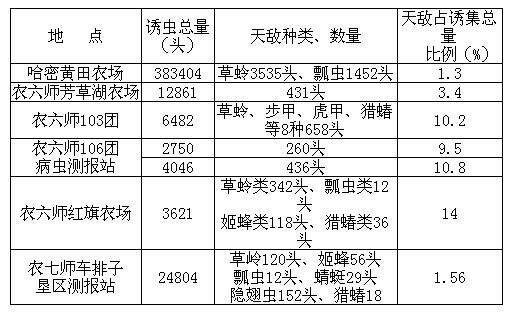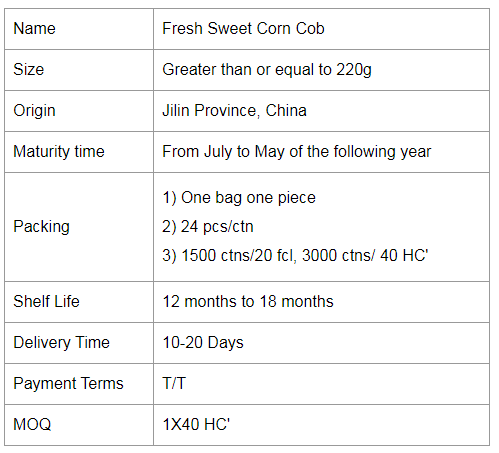The cotton industry is the pillar industry of the Corps. The cotton production, export volume, commodity rate and per capita possession of the Corps have ranked first in the country for many years. In 2008, the cotton planting area of ​​the Corps was 7,008,300 mu, with a total output of 928,800 tons and an average yield of 132 kg/mu. The cotton single and total output reached a new record high and reached a new level. During the “Eleventh Five-Year Plan†period, the Corps plans to expand the cotton planting area to 8.5 million mu, with a total output of 1.2 million tons, maintaining the ranks of China's major cotton producing areas. However, with the continuous expansion of cotton planting area and the extension of continuous cropping years, the promotion of high-intensification planting and drip irrigation area, cotton pest occurrence has also changed, which has become one of the important obstacle factors affecting and restricting the sustainable development of cotton production. Although the use of chemical pesticides can effectively control the pests of cotton fields, there are disadvantages such as rising costs, damage to the ecological environment of cotton fields, and resistance to pests, and large-scale singularity may intensify the contradiction between the control of cotton bollworm and cotton aphid. Causes the cotton raft to rebound. In order to better implement the plant protection policy of “prevention first, comprehensive preventionâ€, since 2004, we have introduced frequency-vibration insecticidal lamps from Henan Yunfei Technology Development Co., Ltd., and tested the prevention and control of cotton pests in various divisions. Demonstration work, the cumulative application of more than 20,000 units, prevention and control coverage of more than 1 million acres, achieved significant ecological, economic and social benefits. It is summarized as follows according to the test and application situation in various places.
1 trapping pest species
According to local investigations, the frequency-vibration insecticidal lamp in the corps traps the pest species involving 5 orders and 16 families, which can be used to trap lepidopteran pests: cotton bollworm, clover worm, ground tiger, Spodoptera litura, corn borer, cabbage budworm , the moth, the hawk moth, the diamondback moth, etc.; the coleoptera are mainly: weevil, yellow curved stripe, copper green chafer, big chafer, bean beetle, indigo, etc.; Orthoptera mainly have scorpion, scorpion; There are leafhoppers, locusts, etc.; Hemiptera has green-spotted crickets and two-pointed red crickets.
The survey results show that Jiaduo frequency-vibration insecticidal lamp has a trapping effect on the main pests in cotton fields, and the insecticidal spectrum is very wide.
2 trapped pests
The 33rd Regiment of the Second Division of Agriculture, from May 13 to September 4, 2005, used a 12-inch frequency-vibration insecticidal lamp, and the average per-vibration insecticidal lamp trapped 132.1 cotton bollworms and 840 heads of Spodoptera litura. Tiger 4165 heads, 1743 heads of chafers, 235 heads of sweet potato moths.
In 2005, the 45th Regiment of the Third Division of the Agricultural Third Division purchased 200 æ€ æ€ æ€ ç› ç› ç› ç› ç› ç› ç› ç› ç› ç› ç› ç› 2005 2005 2005 2005 2005 2005 2005 2005 2005 2005 2005 2005 2005 2005 2005 2005 2005 2005 2005 2005 2005 2005 2005 2005 2005 2005 2005 2005 2005 2005 2005 2005 2005 2005 2005 2005 It kills 385,000 heads.
Yili Agricultural Fourth Division planted cotton group occasions using frequency-vibration insecticidal lamp 1246 ç›, plus high-pressure mercury lamp 174 ç›, black light 29 ç›, tempered more than 680 million cotton bollworm adults.
The Sixth Division of the 106th Group of Pests and Diseases Monitoring Station from April 18th to August 30th, 2004 and April 8th to September 10th, 2005, the daily observation records of the fixed three-frequency vibrating insecticidal lamps The number of pests was 36,440, of which the number of insects was the highest from the end of April to May, and the number of single-light traps was between 160 and 280. According to statistics, in 2005, the six divisions of the Sixth Division of the Agricultural Division placed a total of 3,215 insecticidal lamps, trapping 1,694,600 adult bollworm adults.
According to the 2004 test of the survey and reporting station of the No. 7 Vehicles in the Agricultural Vehicles, the lights were turned on for 65 days, and the average single-lamp of the frequency-vibration insecticidal lamp accumulated 6201 insects. The average single lamp killed 95.4 insects per day, which was the same period of black light every day. The insecticidal amount was 3.03 times that of 31.5 heads. Among the main pests in cotton fields, there were 1383 heads of cotton bollworms in 65 days, including 761 females, 622 males, males and females 1.22:1, 997 ground tigers, 568 clover worms, and 138 double-leafed fireflies. Cotton blind è½ 79 heads.
In 2005, a total of 650 频 频 频 ç› ç› ç› 2005 2005 2005 2005 2005 2005 2005 2005 2005 2005 2005 2005 2005 2005 2005 2005 2005 2005 2005 2005 2005 2005 2005 2005 2005 2005 2005 2005 2005 2005 2005 2005 2005 2005 2005 2005 2005 2005 2005 2005 2005 2005 2005 2005 121 121 The degree of damage, the area of ​​spray control is greatly reduced.
In 2005, the Agricultural Eighth Shihezi General Field promoted the use of frequency-vibration insecticidal lamps in a large area. The cloth lamps were 800 ç›, covering an area of ​​48,000 mu, and accumulated 356,000 heads of various agricultural and forestry pests, including 105,000 adult cotton bollworms. Effective control of the occurrence and damage of cotton bollworms, ensuring the safe production of cotton, so that the output has been greatly improved.
The above data fully demonstrate that the frequency-vibration insecticidal lamp has superior trapping effect on cotton field pests, and can effectively control the population of pests in cotton fields.
3 control effect
According to a 2002 trial of the Red Star of the 13th Division of Agriculture, [1], the average number of eggs dropped in the lamp area was 17.63, the number of larvae was 5.4, and the number of eggs in the no-light area was 24.1, and the larvae were 7.89. The head and cloth area were reduced by 26.9% and 31.6%, respectively, especially in the peak period of the second generation cotton bollworm. The number of eggs in the cloth area was 28.4, and the number of larvae was 7.9. The number of eggs per plant was 41.2, and the number of larvae was 11.2. The area of ​​the lamp was reduced by 31.1% and 29.5%, respectively.
In the 2003 survey of Huangtian Farm [1], the egg volume and insect amount of cotton bollworm in the cloth-lighting area were lower than those in the no-light area. The average egg volume in the cloth-lighting area decreased by 54% compared with the control-free area, and the larval amount decreased by 40%. The number of cotton field defenses is 2-3 times, and the cost of cotton field mutation is reduced by more than 15 yuan.
In the July 7th and August of 2004, 5 cotton fields (no spray) were selected in the lighting area and the no-light area. The average number of 100 cotton bollworm eggs in the cloth area was 100. It is 10.7 tablets and 3.1 larvae. In the no-light area, the average number of 100 cotton bollworm eggs was 16.5 and the larvae was 4.85. The number of eggs in the cloth-lighting area decreased by 54.2% compared with the non-lighting area, the larvae decreased by 56.4%, and the dosage per acre was reduced by 2 to 3 times.
In the 2005 survey of the 33rd Regiment of the Second Agricultural Division, the number of eggs dropped by the 100 cotton plants in the lamp area was 0.6, the number of eggs in the cotton field without the lamp area was 17, and the number of eggs in the lamp area was only 3.5%.
In the 2005 demonstration of the farmer's six-story Fangcaohu farm, the number of eggs in the cloth-lighting area was reduced by 61.3% compared with that in the no-light area, and the number of larvae was reduced by 66.7%. The demonstration results of the red flag farm were the second and third generations of cotton bollworms. The average number of times is 2-3 times, up to 4-5 times. If the control is controlled by Sai Dan, the cost of prevention and control will reach 195-293 yuan per hectare, while the number of prevention and control of the lamp area will be reduced to 1-2 times, and the cost of prevention will be reduced to 98. - 195 yuan / hectare.
In 2005, the Shihezi General Field of the Agricultural Eighth Division promoted the use of frequency-vibration insecticidal lamps on a large scale. The field survey results showed that the number of eggs in the first, second and third generations of cotton bollworms in the Budai District decreased by 46.7% and 42.3%, respectively. 41.4%, the larvae decreased by 24.6-35.8%; the flower bell damage rate decreased by 33-60.2%, and the control effect was very significant. This reduced the number of chemical defenses by 0.5 times, the comprehensive control effect of cotton fields reached more than 85%, increased the production of lint cotton by 1,664 tons, and saved 12 tons of pesticides; the cumulative cost of pesticides was more than 600,000 yuan.
It can be seen that the large-scale trapping of cotton bollworm adults by frequency-vibration insecticidal lamps has a significant effect on reducing the number of eggs in the field, reducing the density of the population, reducing the incidence of buds in the field, and effectively controlling the occurrence and damage of cotton bollworms in cotton fields. Correspondingly, the cotton field control area and the number of chemical defenses have been reduced, and good economic, ecological and social benefits have been achieved.
4 effects on natural enemies
The surveys in different years are as follows:
Insect lamp field traps natural enemies

The above data show that the frequency-vibration insecticidal lamp also has a certain trapping effect on the natural enemies of insects (mainly grasshoppers), but the degree of damage is relatively small, which has little effect on the total number of natural enemies in the field, and maintains the ecological balance of the farmland.
5 Prevention costs
Taking the second-generation cotton bollworm control as an example, according to the “Investigation and Research on the Comprehensive Control of Cotton Bollworm in High Density Cotton Field in Southern Xinjiang†[2], the control cost of the moth was 6 yuan/mu, and the second generation cotton bollworm was used. 20%; using frequency-vibration insecticidal lamp to trap cotton bollworm into moth, the cost of prevention is 0.81 yuan / mu, the control effect on the second generation cotton bollworm is 50%; the total cost of applying Bt is 16 yuan / mu, the cumulative control effect is 75%; chemical control costs are 8 yuan / mu, the average control effect is 80%. Among the four methods of prevention and control, the frequency-vibration insecticidal lamp has the highest cost performance. However, the commonly used Yangzhi method is very simple and effective in attracting cotton bollworm adults. However, due to limited resources, a large number of felling has made many branches of Yangshuo already very scarce, and it is unlikely to be used for a long time in large areas. In comparison, the Corps now promotes drip irrigation under a large area, and after the wiring is energized, it greatly reduces the cost of the frequency-vibration insecticidal lamp, which creates a convenient use for the large-scale use of the frequency-vibration insecticidal lamp. condition.
In addition, in many areas, the collected insects are sold to fish farmers, and the average single lamp can be sold for 400 yuan a year, which in turn can generate considerable economic benefits.
6 workload and safety
Comparing the two physical control measures currently in common use, the frequency-vibration insecticidal lamp only needs to turn off the light at night and open the moth once every 2 to 3 days. The moth is not subject to time limit; Labor will collect moths every morning, otherwise it will be counterproductive, and the Yangzhi will need to be replaced in about 7 days. Therefore, the frequency-vibration insecticidal lamp is not only convenient to use, but also saves labor and time.
Jiaduo frequency-vibration insecticidal lamp is very safe in the application practice of the Corps for many years.
7 Summary and discussion
Years of experiment, demonstration and application in various places have shown that Yunfei frequency-vibration insecticidal lamp has a trapping effect on the main pests in cotton fields and has a large number of trapped pests. The timely use of the lamp can greatly reduce the occurrence of cotton bollworm in the field and effectively reduce the chemical defense. The area and frequency can delay the development of resistance to insects such as cotton bollworm, and it is easy to operate, safe and energy-saving, and the cost of prevention and control is relatively low, which is obviously superior to other trapping measures. It is worthy of wide application in the prevention and control of cotton bollworm in cotton field. Jiaduo Frequency-Vibration Insecticide Technology, as a comprehensive pest control measure, has been expanded and applied in the cotton planting production of the Corps, which will play an important role in the sustainable development of the cotton industry of the Corps and reduce environmental pollution.
Further exploration is needed during the lighting period, which can effectively control the growth and decline of cotton bollworms, reduce the cost of use, maximize the protection of natural enemies, and maximize the effect of the frequency-vibration insecticidal lamp control gain. Â
references
[1] Chen Qian, Liu Guojun, Qi Chunhong. Frequency-vibration insecticidal lamp to control the effects of cotton bollworm and spring worm. Xinjiang Agricultural Reclamation Technology
[2] Lai Junchen, Zhang Wuping, He Fufu, Xiong Renci. Investigation and research on the comprehensive control of cotton bollworm in high density cotton fields in southern Xinjiang. Compilation of the corps precision agriculture technology seminar
Fruit Single Packed Sweet Corn
What are the benefits of eating a vegetarian diet on a regular basis?
1. People who eat vegetarian food regularly will live longer than those who eat meat regularly, as Indian tribesmen live longer because of their regular vegetarian diet and many monks live longer because of their regular vegetarian diet. The fat content of sweet corn is 2 grams of fat per 100 grams, making it a low-fat product.
A single cob pack of sweet corn from Jilin Province Agricultural Sister-in-law Food Co., Ltd. is at least 220g and will provide you with at least 6.38g of protein and 4.4g of fat.
2. Corn as a vegetarian food is lower in calories than other foods of the same quality, and its fat content is almost non-existent. It provides the body with the nutrients and vitamins it needs and has no energy stores.
3. Reduces cholesterol levels. Vegetarians have less cholesterol in their blood than meat eaters. If cholesterol levels in the blood are too high, it often causes blood vessels to become clogged.
4. It reduces the burden on the kidneys. Once meat eaters eat meat containing animal blood, the burden on the kidneys is even heavier".



If you have any questions, please contact us directly. If you have any questions, please email us directly.
Sweet Corn Fresh,Delectable Sweet Corn,Sweet Corn Healthy,Baked Sweet Corn
Jilin Province Argricultural Sister-in-law Food Co., Ltd. , https://www.nongsaocorns.com